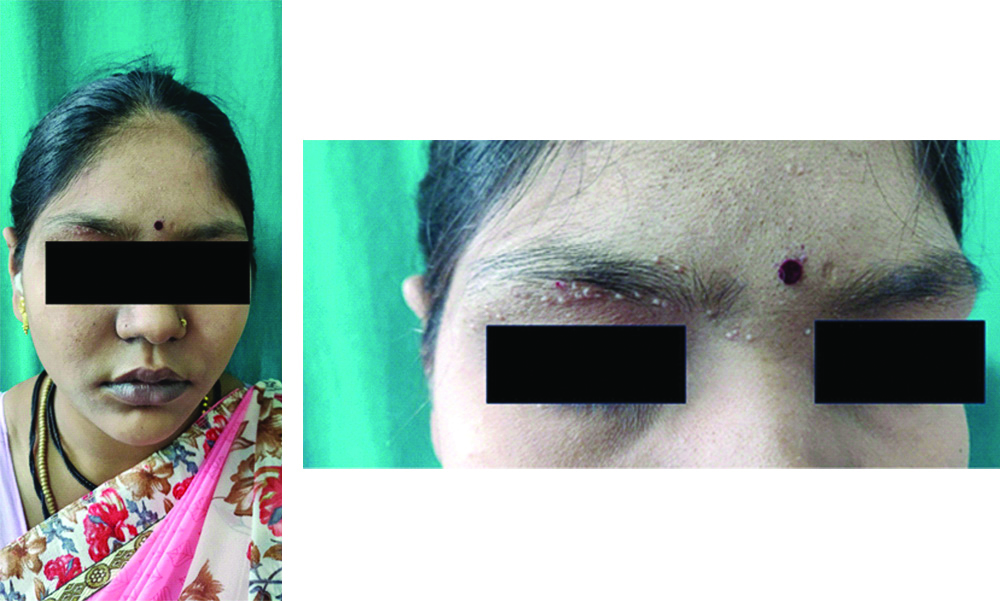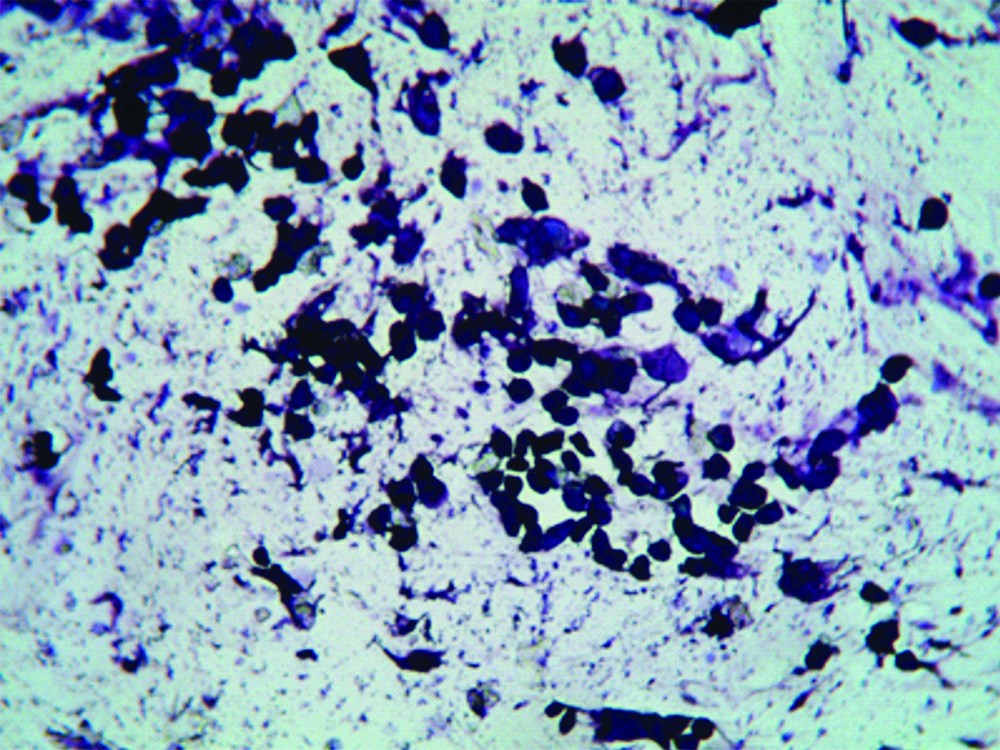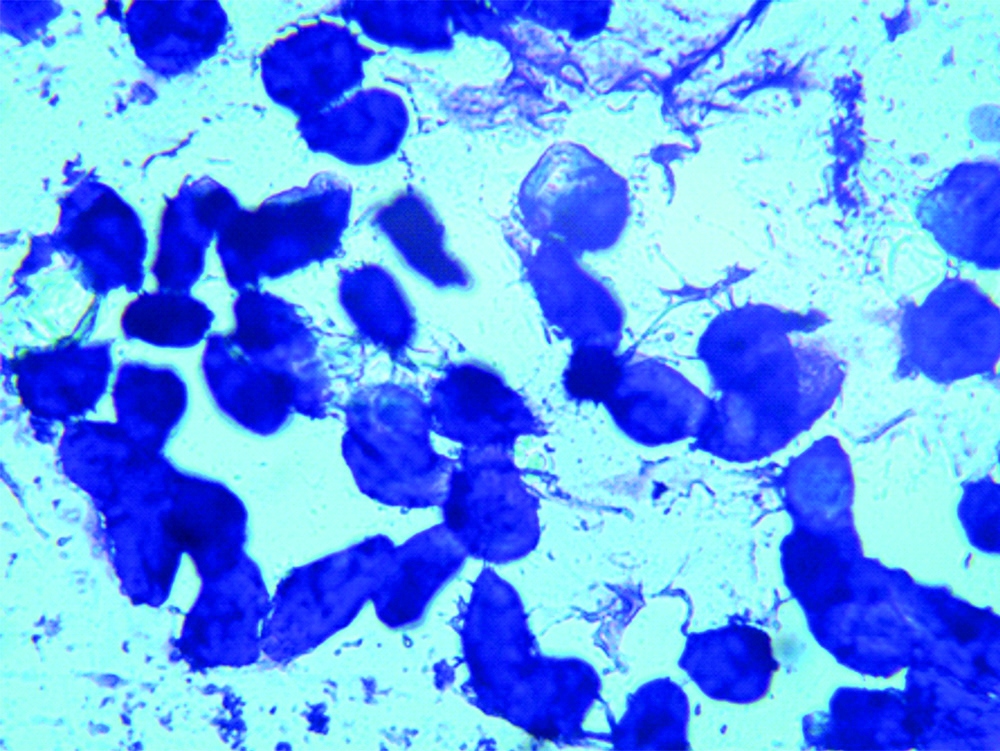Unilateral Molluscum Contagiosum Following Eyebrow Grooming
Palak Kedia1, Bhushan Madke2
1 Postgraduate Student, Department of Dermatology, Jawaharlal Nehru Medical College, Sawangi (Meghe), Wardha, Maharashtra, India.
2 Professor and Head, Department of Dermatology, Jawaharlal Nehru Medical College, Sawangi (Meghe), Wardha, Maharashtra, India.
NAME, ADDRESS, E-MAIL ID OF THE CORRESPONDING AUTHOR: Ms. Palak Kedia, Sawangi, Wardha, Maharashtra, India.
E-mail: palakk13@gmail.com
Eyebrow threading is a popular technique done to shape the eyebrows. Although the procedure is simple, it may cause some dermatological complications like wart, molluscum contagiosum, folliculitis. Hereby, we report a case of unilateral molluscum contagiosum along the threaded eyebrow. The purpose of this report is to create awareness about this complication of threading so that appropriate preventive measures can be taken.
Eyebrow threading, Henderson Patterson bodies, Parlour
Case Report
A 21-year-old immuno-competent female came to our OPD with chief complaint of multiple asymptomatic pin head sized raised lesions on right eyebrow region since one and half months. The lesions were initially 3-4 in number which gradually increased in number over a period of next few weeks. On detailed inquiry, patient reported of getting eyebrow threading done few weeks back in a local beauty parlour. Patient had no similar lesions on any other part including face prior to threading.
Cutaneous examination showed multiple firm, dome shaped, pearly white papules of size 1-3 mm with central umbilication over right eyebrow region [Table/Fig-1]. Differential diagnosis of molluscum contagiosum and milia was made on clinical ground.
Multiple dome shaped, pearly white papules of size 1-3 mm with central umbilication over the right eyebrow region.

Content of one of the lesions was extirpated with a sterile needle. A crush smear was prepared of extruded material and stained with Giemsa stain. A comedone extractor is used to express the molluscum cheesy core which is then squashed between two glass microscope slides. The squashed molluscum core is stained using 5 to 7 drops of Giemsa stain. Microscopy of smear showed multiple round to oval deeply basophilic, anucleated bodies with a homogeneous appearance surrounded by a membrane (Henderson Patterson bodies) confirming the diagnosis of molluscum contagiosum [Table/Fig-2,3].
Giemsa stained smear showing multiple round to oval basophilic bodies with a homogeneous appearance (Henderson Patterson bodies) at 10x.

Giemsa stained smear showing multiple round to oval basophilic bodies with a homogeneous appearance (Henderson Patterson bodies) at 40x.

The lesions were treated by electro-desiccation. Local application of 2% mupirocin ointment was advised for 7 days. On follow-up after seven days, good cosmetic results were seen.
Discussion
Molluscum contagiosum is caused by Molluscum Contagiosum Virus (MCV), largest known human virus which is a type of DNA poxvirus [1]. MCV is of four types; MCV I to MCV IV of which MCV I is most common. MCV II is usually seen in adults [2]. MCV infects the epidermis and multiplies in the cellular cytoplasm [3]. It is transmitted by direct contact either with infected skin, sexual contact or by contaminated fomites [3]. It can also spread via auto-inoculation, so called pseudo-koebner phenomenon [3]. It is most common in children between 1-12 years of age. MCV lesions are mostly seen over face, neck, armpits, arms and hands. In sexually active adults and immuno-compromised individuals, the lesions are commonly seen in the genital, abdomen and the inner part of the thigh [2]. There are different routes of transmission of infection and out of them one is vertical transmission. In this case, lesions were typically present on the scalp and have a circular arrangement. The lesions appear as pearly, flesh coloured dome-shaped papules or nodules with a central depression or umblication. In HIV and other immuno-suppressed patients, lesions may be extensive, more than 1 cm in diameter (giant molluscum contagiosum) or refractory to treatment [3]. Molluscum contagiosum lesions are generally painless. Itching may be present. Scratching or picking the lesions can cause secondary bacterial infection or scarring [2]. The lesion is self-limiting and may resolve within six to nine months or persist for as many as three to four years [3]. General measures such as not to scratch or rub the lesions; not to share towels, tub, or bath utensils must be advised [3]. The treatments advocated are: a) mechanical (e.g., cryotherapy, curettage, laser therapy); b) chemical (e.g., cantharidin, potassium hydroxide, podophyllotoxin, benzoyl peroxide, tretinoin, trichloroacetic acid, lactic acid, glycolic acid, salicylic acid); c) immune-modulating (e.g., imiquimod); d) interferon alpha, cimetidine); or e) anti-viral (e.g., cidofovir) [4].
Eyebrow threading is a simple, quick and cost-effective cosmetic technique done for shaping eyebrows. Before threading, the area is wiped with a cotton ball soaked in astringent. This produces a cooling effect which numbs the skin causing less pain during the procedure [5]. The beautician clasp one end of a cotton thread in her mouth and the other end is encircled around the fingers of the hand. The thread is looped around individual or a few hair shafts together. The hairs are quickly pulled out with brisk movements in rapid succession [6]. This traumatic epilation of eyebrow hair may disrupt the epidermal barrier, thus, making the eyebrow region vulnerable to develop molluscum contagiosum by seeding of the virus [5]. Once the virus has been inoculated, lesions develop after an incubation period of around 2-6 weeks [3]. The lesions may spread further by auto-inoculation. Using same thread, cotton puff, towel or scissors for many clients could be the source of virus [5]. Another source could be the beautician’s hands [5]. [Table/Fig-4] shows the comparison of present study with the available literature [5-7]. The authors hypothesised that the beautician must have done the first eyebrow by the same thread used previously on some other customer and used the new unused part of thread from the same spool for another eyebrow. The infection may also occur unilaterally depending if the infected part of napkin or beautician’s hand comes in contact with one eyebrow only.
Comparison of present study with the available literature [5-7].
| Authors | Study particulars |
|---|
| Gupta S et al., [5] | Eight patients developed molluscum lesions over eyebrows after a session of eyebrows threading from beauty salons. |
| Verma SB [6] | Eight patients developed flat to slightly raised warts in eyebrow region. They all attended beauty salons once every month to have their eyebrows shaped by threading. |
| Ghosh SK et al., [7] | Three patients developed molluscum contagiosum over their eyebrows after beauty-salon procedures to shape the eyebrows. |
| Present study | One patient of unilateral molluscum contagiosum along the threaded eyebrow. |
Possible complications of threading include erythema, folliculitis, koebnerization of vitiligo, bullous impetigo, verruca plana, molluscum contagiosum and hyperpigmentation [5,6]. Other methods of shaping the eyebrows, associated with similar complications, are tweezing, trimming and waxing [7].
Conclusion
The purpose of this report is to create awareness about this complication of threading. Preventive measures should be taken such as not using same materials like thread, cotton balls for different clients and use of disposable napkins.
Author Declaration:
Financial or Other Competing Interests: No
Was informed consent obtained from the subjects involved in the study? Yes
For any images presented appropriate consent has been obtained from the subjects. Yes
Plagiarism Checking Methods: [Jain H et al.]
Plagiarism X-checker: Aug 10, 2019
Manual Googling: Sep 27, 2019
iThenticate Software: Oct 18, 2019 (17%)
[1]. van der Wouden JC, van der Sande R, Kruithof EJ, Sollie A, van Suijlekom-Smit LW, Koning S, Interventions for cutaneous molluscum contagiosumCochrane Database Syst Rev 2017 5:CD00476710.1002/14651858.CD004767.pub4PMC6481355 [Google Scholar] [CrossRef] [PubMed]
[2]. Nandhini G, Rajkumar K, Kanth KS, Nataraj P, Ananthakrishnan P, Arunachalam M, Molluscum contagiosum in a 12-year-old child-report of a case and review of literatureJ Int Oral Health 2015 7(1):63-66. [Google Scholar]
[3]. Meza-Romero R, Navarrete-Dechent C, Downey C, Molluscum contagiosum: An update and review of new perspectives in etiology, diagnosis, and treatmentClin Cosmet Investig Dermatol 2019 12:373-81.10.2147/CCID.S18722431239742 [Google Scholar] [CrossRef] [PubMed]
[4]. Leung AKC, Barankin B, Hon KLE, Molluscum contagiosum: An updateRecent Pat Inflamm Allergy Drug Discov 2017 11(1):22-31.10.2174/1872213X1166617051811445628521677 [Google Scholar] [CrossRef] [PubMed]
[5]. Gupta S, Chaudhry M, Mahendra A, Kaur S, Eyebrow threading: A boon or a baneIndian J Dermatol 2011 56(6):715-17.10.4103/0019-5154.9183522345777 [Google Scholar] [CrossRef] [PubMed]
[6]. Verma SB, Eyebrow threading: A popular hair-removal procedure and its seldom-discussed complicationsClin Exp Dermatol 2009 pr 34(3):363-65.10.1111/j.1365-2230.2008.02920.x19021633 [Google Scholar] [CrossRef] [PubMed]
[7]. Ghosh SK, Bandyopadhyay D, Molluscum contagiosum after eyebrow shaping: A beauty salon hazardClin Exp Dermatol 2009 34(7):e339-40.10.1111/j.1365-2230.2009.03285.x19456772 [Google Scholar] [CrossRef] [PubMed]